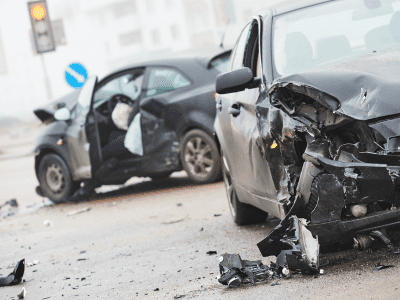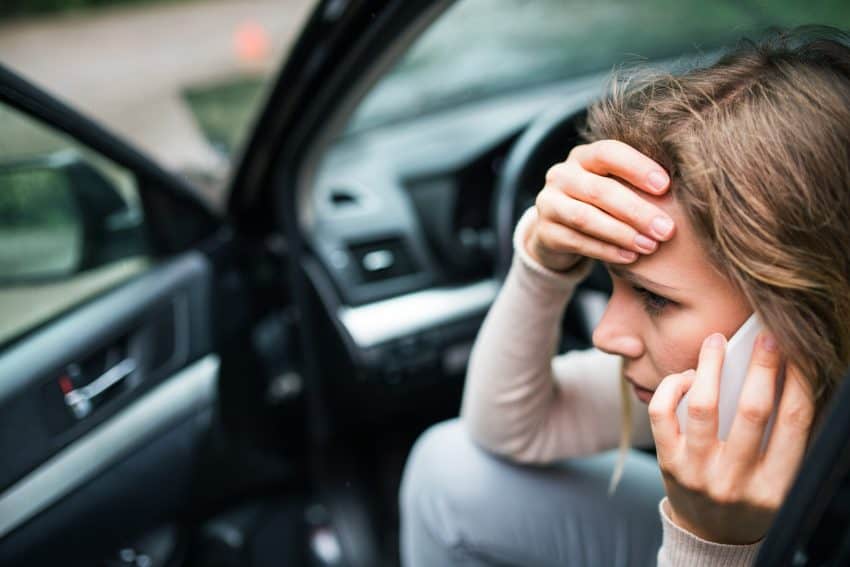4.9 Rating
Google REVIEWS
Leaders in Georgia Personal Injury Law Since 1995
Who is at fault in a Georgia T-bone car wreck?
The bustling city of Atlanta, with its burgeoning population and hectic traffic, often witnesses its share of car accidents. Among them, the T-bone car wreck stands out as particularly devastating. These collisions, characterized by one vehicle crashing into the side of another forming a “T” shape, can lead to severe consequences for the involved parties. But the pressing question for many Atlanta residents is, who is typically deemed at fault in such scenarios?
After a Georgia T-bone car accident or a side impact collision, oftentimes it’s wondered who’s at fault. You cannot determine fault just because one party hit another. Because a lot of times in these accidents, there’s a failure to yield situation. Who failed to yield is a factual determination that’s often determined by the police officer at the scene and by witness testimony.

Who is Usually at Fault in a T-Bone Accident?
A T-bone accident, often termed a side-impact or broadside collision, occurs when the front of one vehicle collides with the side of another. Fault determination, especially in a dense urban setting like Atlanta, can be complex. Typically, the driver who unlawfully entered the intersection is often held responsible. However, there are exceptions. For instance, if a car runs a red light and hits a vehicle already legally in the intersection, the driver who ran the light is typically found at fault.
On the other hand, if a driver turns left in front of another car that has the right of way, the turning driver might be held responsible. It’s crucial for victims of such accidents in Atlanta to consult an Atlanta Car Accident Lawyer to better understand liability nuances.
How is Fault Determined in a Car Accident in Georgia?
Georgia operates under the “modified comparative fault” system. This means a victim can recover damages even if they’re partly to blame for the accident, but only if their fault is less than 50%. The amount of compensation is reduced by the percentage of fault attributed to them. So, if you are deemed 20% responsible, you’d recover 80% of your total damages.
In determining fault, evidence like traffic camera footage, eyewitness accounts, and police reports are invaluable. Again, having an experienced Car Accident Lawyer to navigate this process can be a game-changer.


Who is at Fault in a Rear-End Collision in Georgia?
In most cases, the driver who rear-ends another vehicle is usually considered at fault. They’re typically seen as not maintaining a safe following distance or not paying attention. However, situations can vary, and each case has its intricacies.
What Does T-Boned in a Car Accident Mean?
Being “T-boned” refers to the impact point of the accident. Imagine a capital “T” letter: the top line represents one car, and the vertical line represents the other. The vehicle represented by the top line crashes into the side of the vehicle represented by the vertical line. Due to the nature of these accidents, the side-impacted passengers and drivers often sustain more severe injuries, given the limited protection on a car’s side compared to its front or back.
Navigating the aftermath of a T-bone accident in Atlanta can be challenging. With complex liability laws and high stakes in terms of potential compensation, it’s pivotal to have the right legal guidance. Ensure you protect your rights by consulting an expert in the field.
Remember, while the general information provided here offers a broad overview, every accident has unique circumstances. For tailored advice, always turn to an experienced Atlanta Car Accident Lawyer such as Scholle Law for a free consultation.
Atlanta Truck Accident Lawyer
